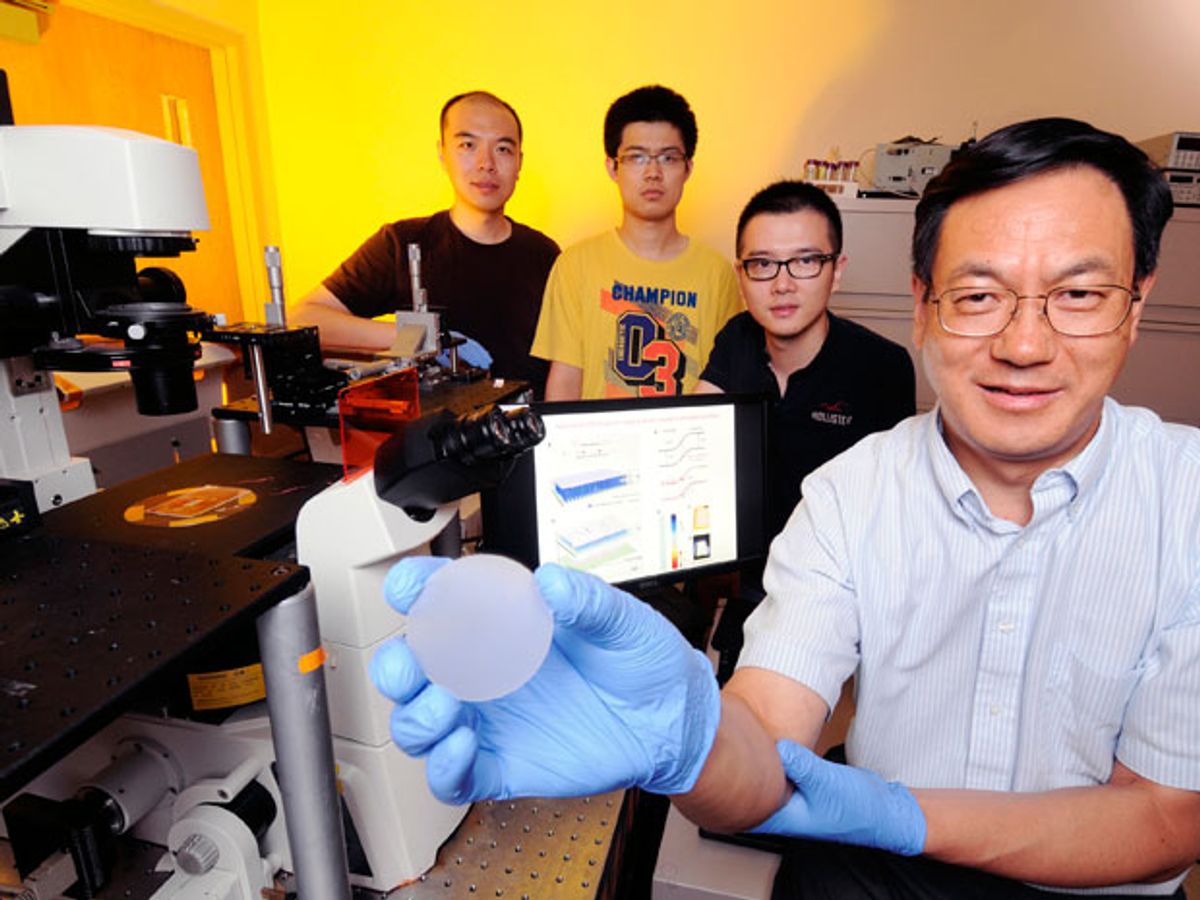Nanomaterials have offered the tantalizing possibility of lifelike artificial skin. Now researchers at the Georgia Institute of Technology have developed a use for zinc-oxide (ZnO) nanowires to serve as tiny LEDs whose emission intensity is dependent on the local strain put on them.
The Georgia Tech researchers believe that this work offers a new approach to imaging force and could lead to a new approach for human-machine interfaces.
“You can write with your pen and the sensor will optically detect what you write at high resolution and with a very fast response rate,” said Zhong Lin Wang, Regents’ professor and Hightower Chair in the School of Materials Science and Engineering at Georgia Tech, in a press release. “This is a new principle for imaging force that uses parallel detection and avoids many of the complications of existing pressure sensors.”
The research, which was published in the journal Nature Photonics ("High resolution electroluminescent imaging of pressure distribution using a piezoelectric nanowire-LED array"), builds on Wang’s previous work in applying ZnO nanowires to uses that can exploit their piezoelectric properties.
The ZnO nanowires used in this latest device exploit a phenomenon Wang has dubbed piezo-phototronics because they operate on the same principal as piezoelectric materials, but emit different light intensities based on the level of pressure applied to them.
“When you have a zinc oxide nanowire under strain, you create a piezoelectric charge at both ends which forms a piezoelectric potential,” Wang explained in the press release. “The presence of the potential distorts the band structure in the wire, causing electrons to remain in the p-n junction longer and enhancing the efficiency of the LED.”
Wang and his team fabricated the devices by growing the nanowires on a gallium nitride thin film substrate with the c-axis pointing upward. A polymer is then added, filling the space between the nanowires. A nickel-gold electrode is then attached to the gallium-nitride film to form an ohmic contact, and a transparent indium-tin oxide (ITO) film is deposited on top of the array to serve as a common electrode.
When pressure is applied to the device, some of the nanowires are compressed along their axial directions, resulting in a negative piezo-potential; the uncompressed nanowires have no potential.
The researchers demonstrated that when they used an ordinary pen to write on the material, light is emitted from the bottom of the material that corresponds to the letter written on the top.
“The response time is fast, and you can read a million pixels in a microsecond,” said Wang. “When the light emission is created, it can be detected immediately with the optical fiber.”
While the light turning on and off is completed in a mere 90 milliseconds, Wang believes that the spatial resolution, which currently stands at 2.7 micrometers, can be improved. He thinks the team can achieve this by reducing the diameter of the nanowires, making it possible to fit more of them into a given area.
Photo: Georgia Institute of Technology
Dexter Johnson is a contributing editor at IEEE Spectrum, with a focus on nanotechnology.



